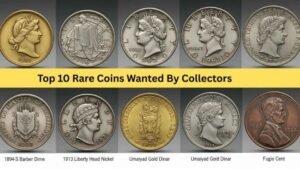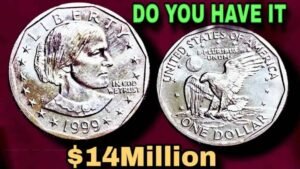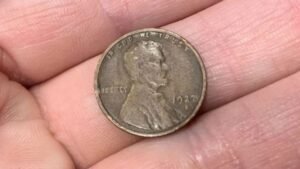The Lincoln Wheat Penny is a small coin with a big story. Some of these pennies, especially rare ones, are worth millions of dollars. One such penny, valued at $9 million, has sparked curiosity among collectors and everyday people alike. Could this valuable coin still be out there, hiding in your pocket change? In this article, we’ll explore the history of the Lincoln Wheat Penny, what makes certain ones so valuable, and whether a $9 million penny could still be in circulation.
What Is the Lincoln Wheat Penny?
The Lincoln Wheat Penny is a U.S. one-cent coin produced by the United States Mint from 1909 to 1958. It features President Abraham Lincoln on the front and two wheat stalks on the back, giving it the nickname “Wheat Penny.” These coins were common in everyday transactions for decades, but some rare versions have become treasures for collectors.
Why Are Some Wheat Pennies So Valuable?
Certain Lincoln Wheat Pennies are worth a fortune due to their rarity, condition, or unique features. Here are the main reasons why some pennies fetch millions:
- Low Production Numbers: Some years or mints produced very few pennies, making them scarce.
- Minting Errors: Mistakes during production, like double-stamping or missing letters, create one-of-a-kind coins.
- Historical Significance: Coins tied to specific years or events, like the 1943 bronze penny, are highly sought after.
- Condition: Pennies in near-perfect condition (called “mint condition”) are worth more.
For example, a 1943 Lincoln Wheat Penny made of bronze (instead of the usual steel due to wartime metal shortages) sold for $1.7 million in 2010, and its value has climbed since, with some estimating it could now be worth up to $9 million.
The $9 Million Penny: Fact or Legend?
The idea of a $9 million penny comes from rare coins like the 1943 bronze Lincoln Wheat Penny or the 1969-S Doubled Die Penny. These coins are so rare that only a handful exist. Their high value comes from their scarcity and the excitement they generate among collectors. But is a penny worth $9 million still floating around in circulation?
Could It Still Be in Circulation?
It’s highly unlikely but not impossible. Most high-value pennies have been found by collectors or dealers and are now in private collections or museums. However, there’s always a small chance one could still be out there. People occasionally find valuable coins in old piggy banks, inherited collections, or even pocket change.
Here’s a table summarizing key details about the $9 million penny:
| Feature | Details |
|---|---|
| Coin Type | Lincoln Wheat Penny (1909–1958) |
| Rarest Years | 1943 (bronze), 1969-S (doubled die) |
| Estimated Value | Up to $9 million for top-condition, rare versions |
| Material | Bronze (1943 error coins) or copper |
| Likelihood in Circulation | Extremely low, but not impossible |
How to Spot a Valuable Wheat Penny
If you want to check your change for a potential treasure, here’s what to look for:
- Check the Date: Focus on key years like 1943 or 1969-S.
- Look for Errors: A doubled image or unusual metal (like a bronze 1943 penny) could indicate a rare coin.
- Examine the Mint Mark: A small letter like “S” (San Francisco) or “D” (Denver) under the date can signal rarity.
- Condition Matters: Coins with clear details and no wear are more valuable.
- Get It Appraised: If you think you have a rare penny, take it to a professional coin dealer or grading service.
Where to Find Wheat Pennies
You might come across Wheat Pennies in:
- Pocket Change: Though rare, some still circulate.
- Coin Rolls: Banks sell rolls of pennies that might include older coins.
- Flea Markets or Estate Sales: Old collections often surface here.
- Family Heirlooms: Check old jars or boxes passed down from relatives.
Tips for Coin Collectors
If you’re inspired to start collecting, here are some beginner tips:
- Learn Key Dates: Research valuable years like 1943, 1969-S, or 1909-S VDB.
- Use a Magnifying Glass: Small details like mint marks or errors are easier to spot.
- Store Coins Safely: Keep them in protective holders to preserve their condition.
- Join a Community: Coin clubs or online forums can teach you more and connect you with experts.
Conclusion
The $9 million Lincoln Wheat Penny is a fascinating piece of American history, blending mystery, rarity, and the thrill of discovery. While it’s highly unlikely one is still in circulation, the possibility keeps collectors and dreamers searching. By knowing what to look for—key dates, minting errors, and pristine condition—you could uncover a hidden gem. So, next time you get some change, take a closer look. You never know what treasure might be hiding in plain sight!
Frequently Asked Questions (FAQs)
1. What makes a Lincoln Wheat Penny worth $9 million?
Rare pennies, like the 1943 bronze or 1969-S doubled die, are valuable due to their scarcity, unique errors, and excellent condition.
2. Are Wheat Pennies still used in everyday transactions?
While most Wheat Pennies are no longer in circulation, some still appear in pocket change or coin rolls.
3. How can I tell if my penny is valuable?
Check the date, mint mark, and look for errors like doubling. Have a professional appraiser evaluate any suspicious coins.
4. Where can I sell a rare Wheat Penny?
You can sell through reputable coin dealers, auction houses, or online platforms like eBay, but always get an appraisal first.
5. What’s the rarest Lincoln Wheat Penny?
The 1943 bronze penny and the 1969-S doubled die penny are among the rarest and most valuable.




